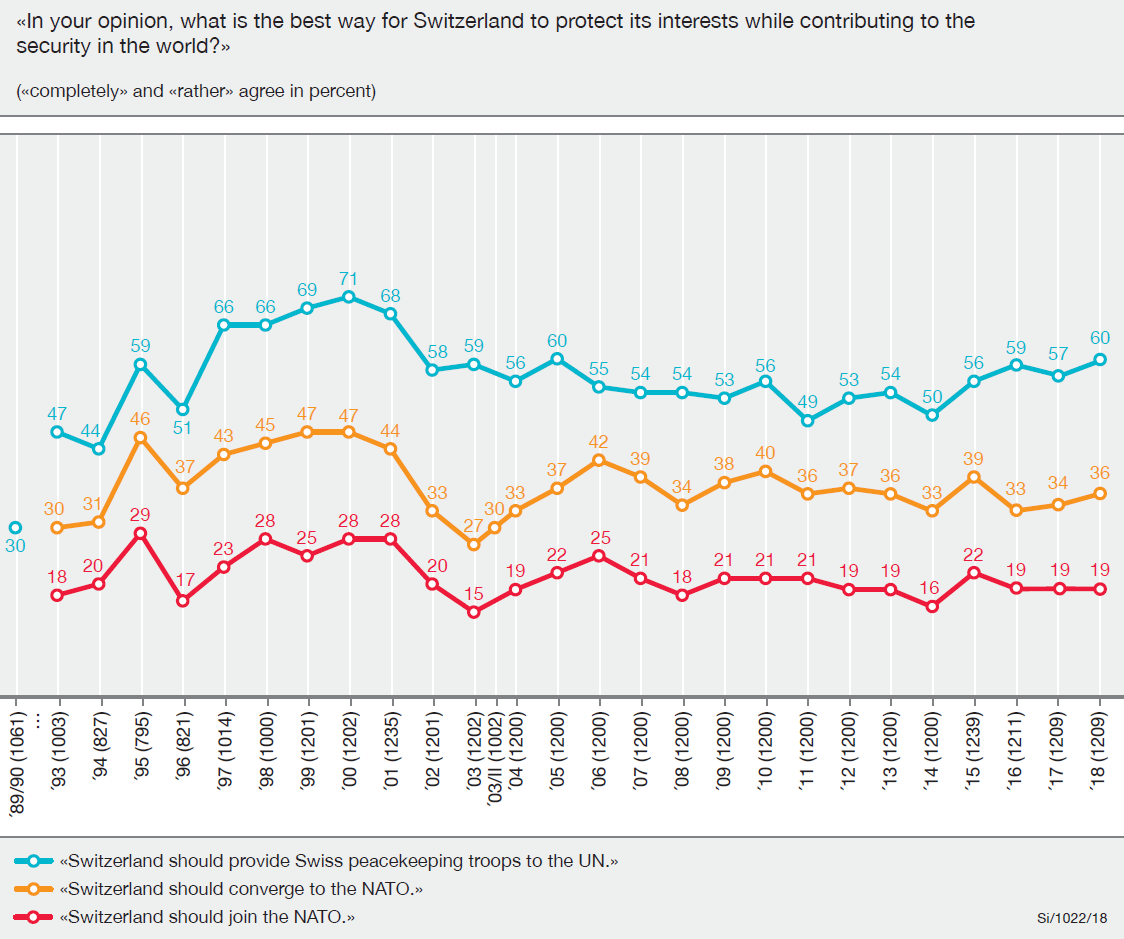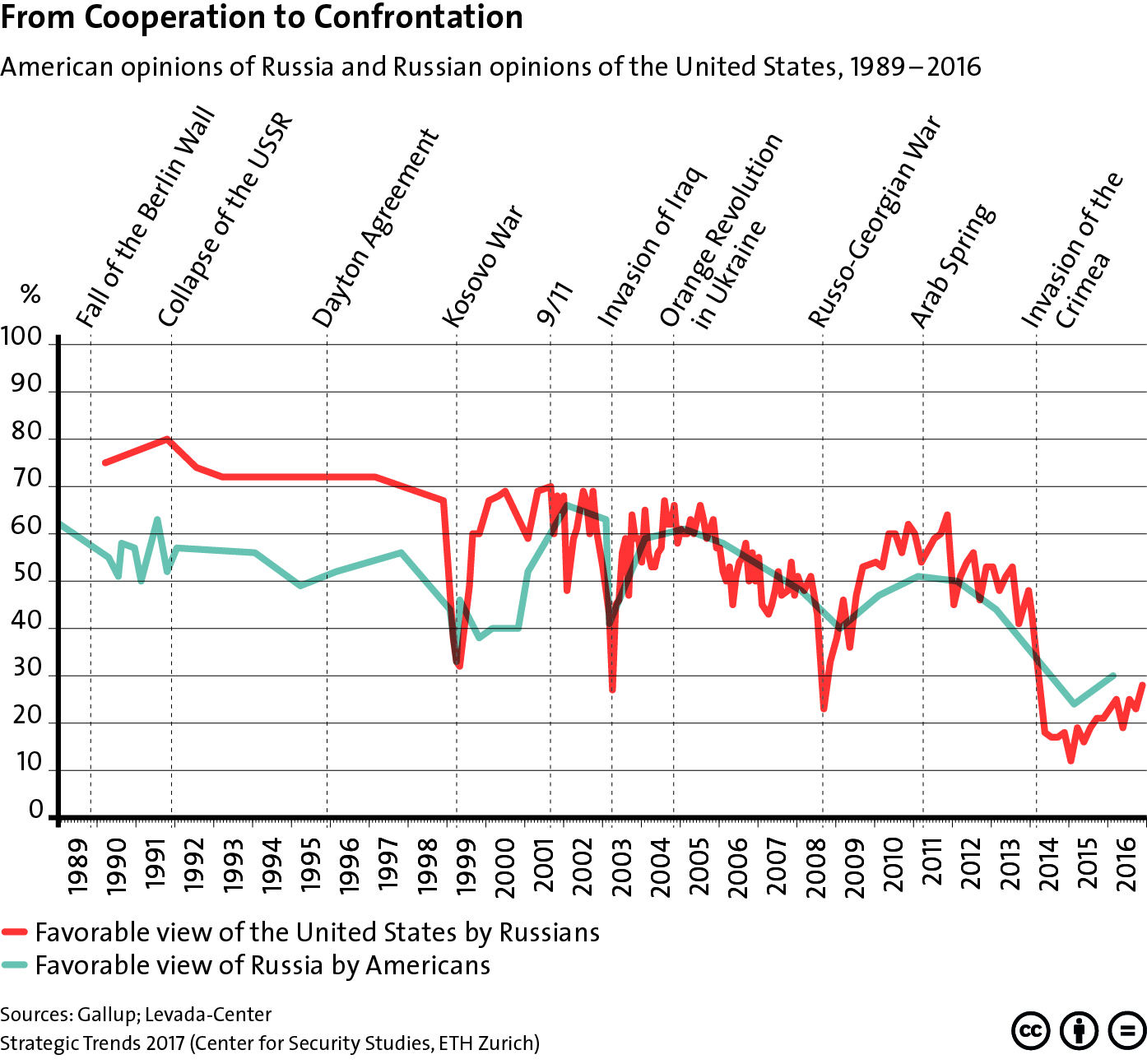This graphic tracks how American opinions of Russia and Russian opinions of the United States have developed over time. To find out more about how these developments influenced Europe’s post-Cold War security architecture, see Christian Nünlist’s chapter in Strategic Trends 2017 here. For more CSS charts, maps and graphics, click here.
Tag: Public Opinion

This article was originally published by E-International Relations (E-IR) on 3 March 2019.
In recent years, a sharp debate dominates the scholarly literature on American foreign policy and grand strategy: should the United States retrench from the expansive commitments undertaken in the aftermath of World War II as a globe-spanning military superpower, or should it renew its efforts to pursue the present strategy of global leadership? This issue is not merely of parochial interest to academics; rather, it represents the key dilemma faced by Washington foreign policymakers in the aftermath of the 2016 election campaign and the changes brought by the anti-establishment Trump presidency. Both sides of this debate contend that the American public supports their preferred strategy. However, a closer examination of recent public opinion date actually shows that the American people favor a “middle path” rather than either of the two preferred grand strategies advanced by proponents of Global Leadership and Restraint, respectively.

This graphic of the week tracks how the Swiss public’s attitude toward security alliances has developed over the past 30 years. To find out more about long-term trends and tendencies in Swiss public opinion on foreign, security, and defense policy issues, see here (in German). For more CSS charts, maps and graphics on defense policy, click here.




